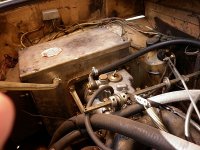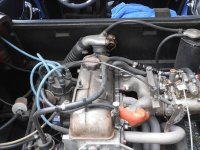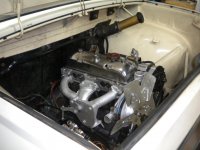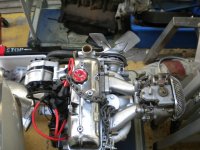- Joined
- Sep 6, 2003
- Messages
- 487
Just one small addendum:
The options for 14" are basically 4.5" or something wider.
For the former, the rear tyres will possibly be 175/70. For the latter, a nice rear tyre size is 185/60.
One issue is spare tyres. One consideration is having the spare wheel/tyre physically fit in the nose cradle. Another is having the spare tyre size have a very close circumference length to the rear road tyre. (The issue here is not stressingto the extent of straining the differential if the spare has to be used for anything but a shortish distance.)
Both concerns are covered by having an original wheel with a 135/80-15 spare for a 175/70-14 rear & a 145/65-15 spare for a I85/60-14 rear.
For 135/80-15, I'd buy Nankang's CX-668 & for 145/65-15, I'd buy Nankang's AS-1. In each case it will be a tubeless tyre but that's fine on the R8/R10 rims - just check for slow leaks & goop as appropriate (bead or rivet area).
It would be interesting at some point to have you report back on what you ended up doing & how it turned out.
cheers! Peter
The options for 14" are basically 4.5" or something wider.
For the former, the rear tyres will possibly be 175/70. For the latter, a nice rear tyre size is 185/60.
One issue is spare tyres. One consideration is having the spare wheel/tyre physically fit in the nose cradle. Another is having the spare tyre size have a very close circumference length to the rear road tyre. (The issue here is not stressingto the extent of straining the differential if the spare has to be used for anything but a shortish distance.)
Both concerns are covered by having an original wheel with a 135/80-15 spare for a 175/70-14 rear & a 145/65-15 spare for a I85/60-14 rear.
For 135/80-15, I'd buy Nankang's CX-668 & for 145/65-15, I'd buy Nankang's AS-1. In each case it will be a tubeless tyre but that's fine on the R8/R10 rims - just check for slow leaks & goop as appropriate (bead or rivet area).
It would be interesting at some point to have you report back on what you ended up doing & how it turned out.
cheers! Peter




